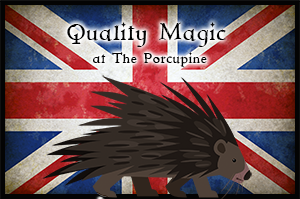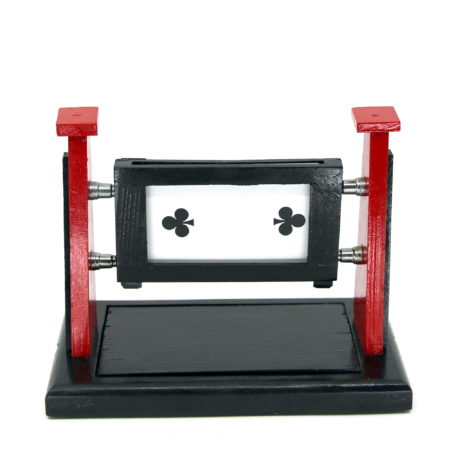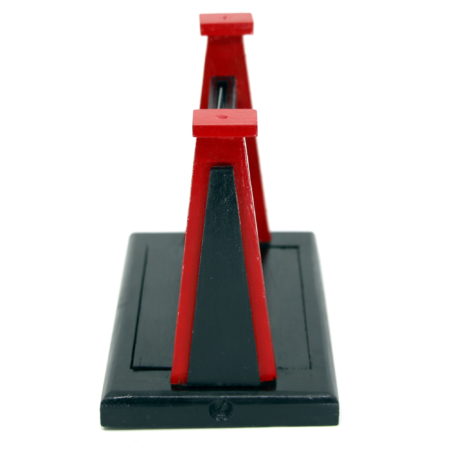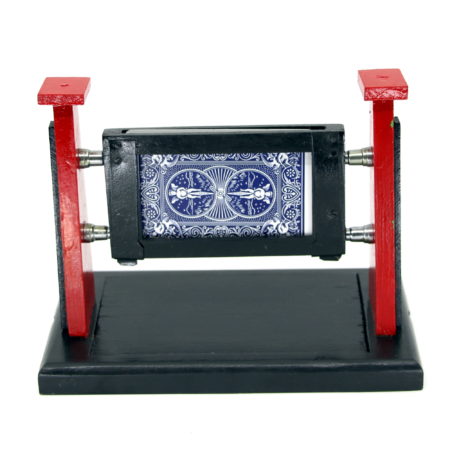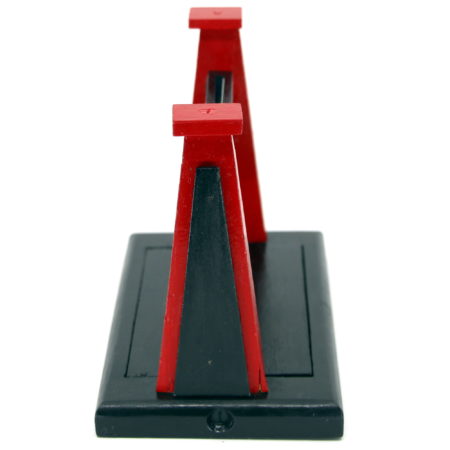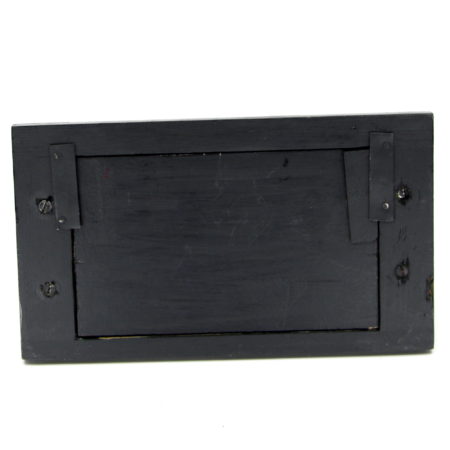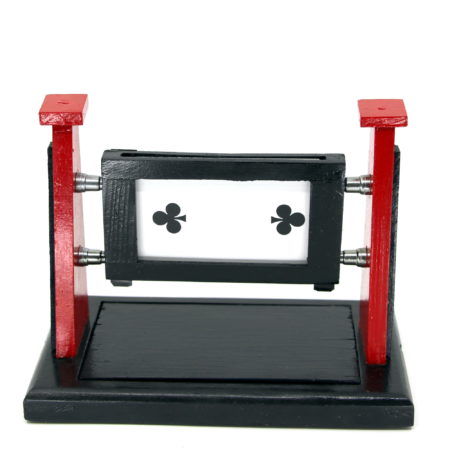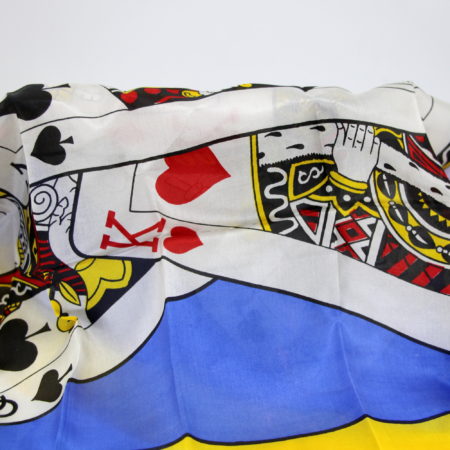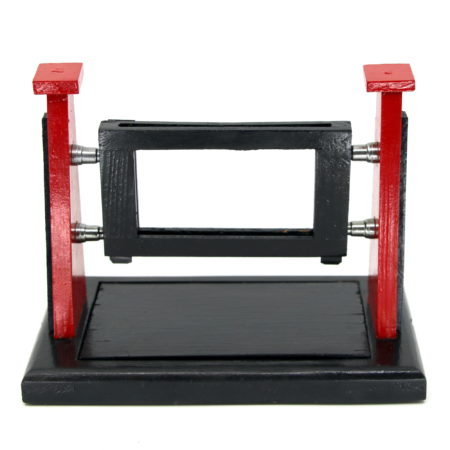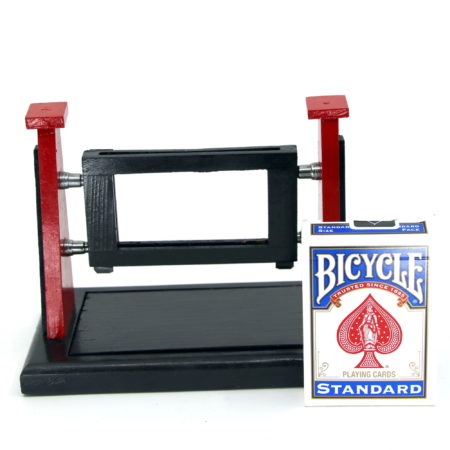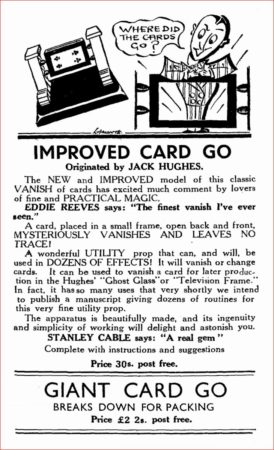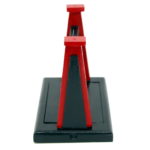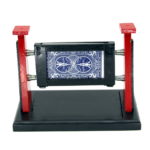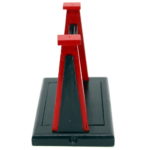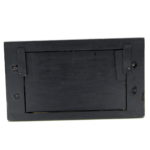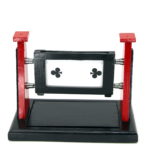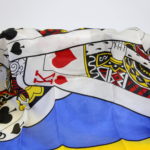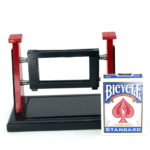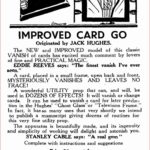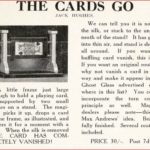Description
The legendary British Inventor, Craftsman, and Dealer, Jack Hughes, invented Card Go c. 1938 when he was building magic for Davenport’s.
This is a very rare find and the first time I have seen this improved version from Jack Hughes. This is even better and smoother than the original Jack Hughes version.
- It works with both Bridge and Poker sized cards
- Allows for more than one card to be vanished with zero reset. You can vanish one after the other up to ten cards (not that you would want that many, but multiple vanishes does look good).
- The release uses two prongs made from clock springs, one on either side, which are very reliable and make for a clean vanish almost every time.
- Easy load – just drop the card in the frame (as though it was just a frame!).
- No premature Vanishes.
- The Vanish does not require visual queues, you can stare at the audience the whole time.
- Never misses – some versions of Card Go can miss and seeing a card flutter to the floor maybe funny but it is not very magical.
- Almost silent operation.
Effect: One of the finest vanishes of a card you will ever see! Here is a new routine working with another Jack Hughes classic: Ghost Glass.
A card is chosen and shuffled back into the pack. The magician shows a small tray covered by a silk and inside is a frame with a card. The magician proudly states this is their card – but the spectator says it is wrong. The magician covers the frame quickly and now the card changes to their chosen card.
The card is covered again and it vanishes altogether! Another tray is shown empty on both sides and a small glass is inverted on top. It is clearly empty. The silk is now shown empty on both sides and covers the glass. With a whisk of the silk away the chosen card now appears under the glass.
Jack invented Card Go between 1936-1939 and later improved it c. 1945. This is the account in World of Magic – Vol. 1 (pg. 11-12):
In London, Jack met Will Goldston and was soon busily engaged in making effects for this world famous dealer. Moreover, Jack’s reputation as a maker of magic gradually grew amongst the higher circle of magicians; whilst his inventive ability for devising new effects, soon caused his services to be much sought after.
In the years of 1936 and 1937 he produced what has now become known as the . It (‘Television Glass Frame’) was distributed by Davenport’s in 1938 and it was acclaimed a ‘winner’ … so much so that it was purchased by magicians in the four corners of the world – but few of the purchasers knew that this was the invention of a young man named Jack Hughes.
Other original or improved items combined with expert craftsmanship were now speeding from his magic maker’s bench. Sold as exclusive effects to the leading magicians of the time, were the ‘Card Forcing Stand’, the ‘Examined Jap Box’, ‘Card Go‘ (a poor name for such an ingenious device), ‘Attaboy’, the ‘Single Handed Nest of Boxes’, the ‘All Round Production Box,’ to name only a few. In 1939 came the ‘Coins in Glass’.
As with many great inventions a number of other people have claimed the creation of this truly clever device. According to Eric Lewis in The Crowning Miracles (pg 194) the original Card Go was in fact invented by The Great Norman but he sold the rights to manufacture to Jack Hughes, and since then it has been attributed to Jack Hughes. The Great Norman’s real name was Norman Hazeldene and he grew up just outside Manchester in Stockport, Cheshire, England. But I wonder if this was the effect that Eric Lewis is referring to, because it is similar to Card Go, but not the same (hence Improved).
In addition, in 1975 Jack Hughes refutes the claim in Abra (9th August 1975, pg 110):
Jack Hughes points out that Cuban Release and Card Go were his own originations and not those of The Great Norman as stated by Edwin last week, and that he was the first to manufacture Good Shot.
Joe Berg also claims to have invented it with his Mysto Card Frame. But I have found nothing else to say that Jack Hughes did not invent Card Go, including many ads and reviews from the 1940’s and later, and of course Jack Hughes’ World of Magic Books.
(Notice: Includes: Printed Instructions.)
( Post Source: martinsmagic.com - click for details )